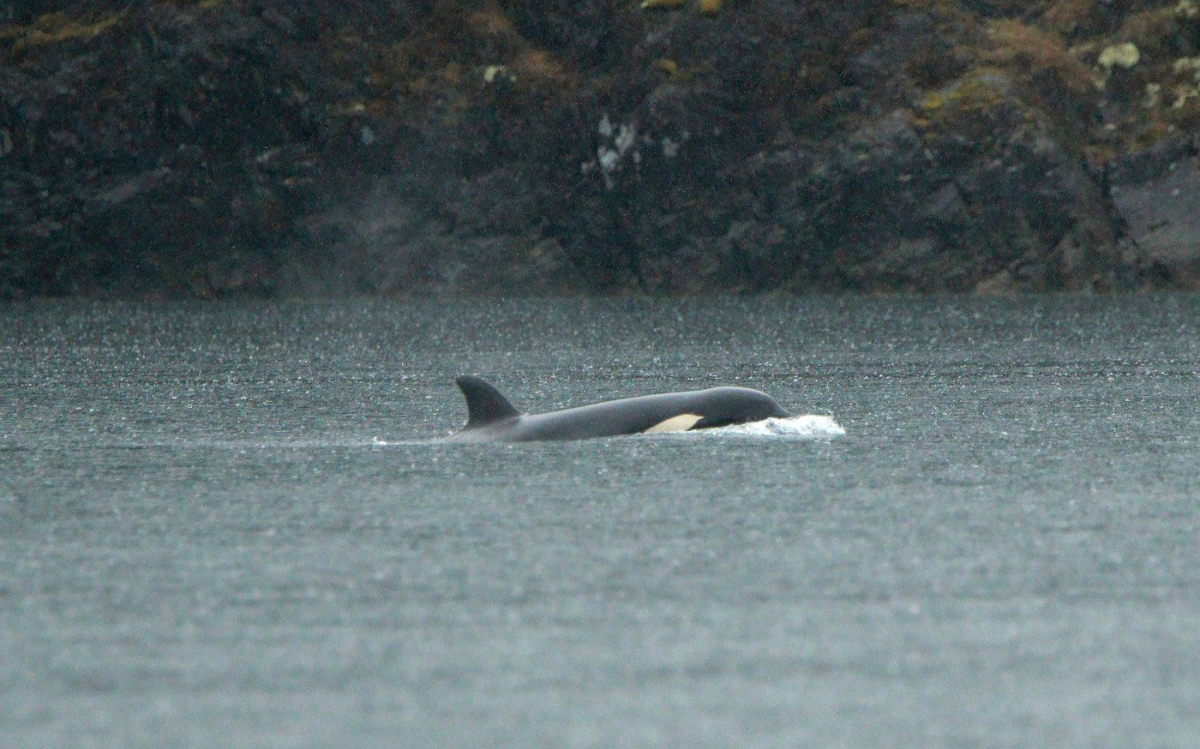Support strong Canadian climate journalism for 2025
A killer whale calf stranded in a remote tidal lagoon for almost two weeks appears healthy, with signs the young orca is seeking prey, but officials are awaiting results of a deeper analysis of its condition.
Rescue officials, who have been trying to coax the two-year-old orca calf to pass through a narrow, swift-moving channel leading to the open ocean, will now attempt to feed the young whale, said Paul Cottrell, the Fisheries Department's Pacific region marine mammal co-ordinator.
The rescue team will see if the calf will eat harbour seal remains placed around the lagoon where the young killer whale is known to frequent, Cottrell said in a shoreline interview near the village of Zeballos, located more than 450 kilometres northwest of Victoria.
"We are looking at partially supplementing food for the animal going forward," said Cottrell.
"We've got lots of contingencies, depending on the animal's health. Just looking generally at the animal, it's very active. It doesn't look emaciated at all, no peanut head."
Whale researchers use the term peanut head to describe the condition of underfed killer whales that lose their fat reserves, giving their head a peanut-shaped profile at the surface.
Concern over the stranded whale started when its pregnant mother died after being caught in the lagoon in a low tide on March 23. Rescuers have been unable to coax the calf out of the area during the brief windows the tide would allow it to get to the ocean.
Efforts by the Fisheries Department, the Ehattesaht First Nation and others to get the calf to open water where it might reconnect with its pod members have included using a flotilla of boats setting a series of directional lines leading out of the lagoon and playing recorded whale calls from its family.
Cottrell said officials were on the water Tuesday launching their feeding plan, which involved placing prey and using a waterproof drone to observe the young killer whale.
He said the drone video footage and photos will give marine mammal experts a better sense of the calf's health.
"We want to see if there's any interest in harbour seals," said Cottrell. "There's a lot of fish and there are birds and this animal was seen ingesting a bird recently. The animal's actively looking for prey. That's a great sign."
The channel area where the orca calf must pass through is a difficult stretch of water, made more complex by limited high tide opportunities, Cottrell said.
"It's a very narrow, shallow channel," he said. "To navigate in must have been very dangerous in itself and the mom got caught on the sandbar and live-stranded and died unfortunately. This is a dynamic, high-current area. The calf unfortunately is on the other side of the sandbar."
Cottrell said rescue officials earlier discussed contingency plans that could involve attempting to lift the orca calf out of the lagoon, but that won't happen in the near future.
Cedar boughs placed by First Nations residents, who have named the orca calf kwiisahi?is, or Little Brave Hunter, hang from a bridge that the young orca must swim under, while a bouquet of flowers rests at the roadside where locals and visitors are keeping vigil.
This report by The Canadian Press was first published April 3, 2024.




Comments